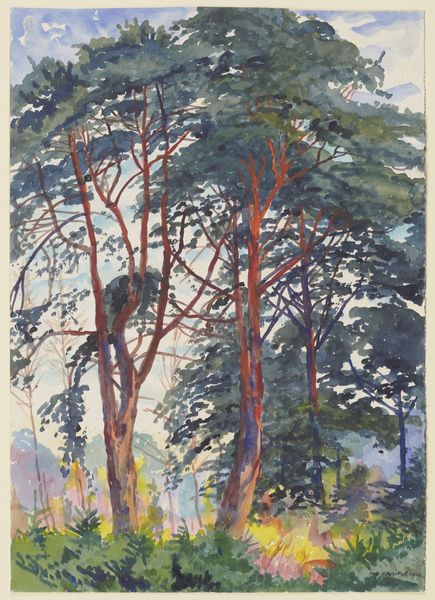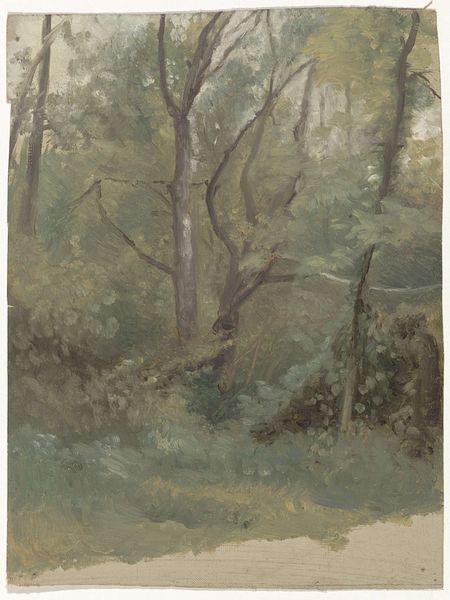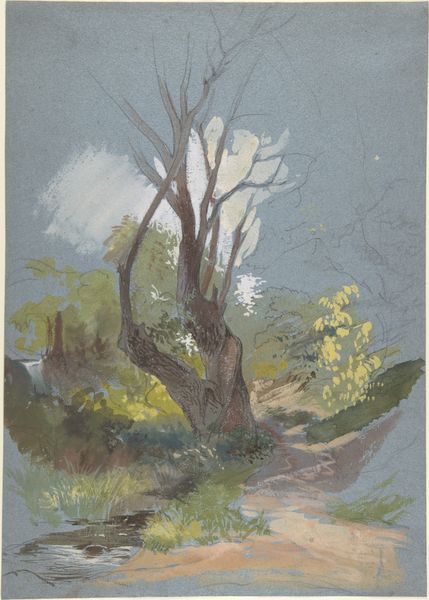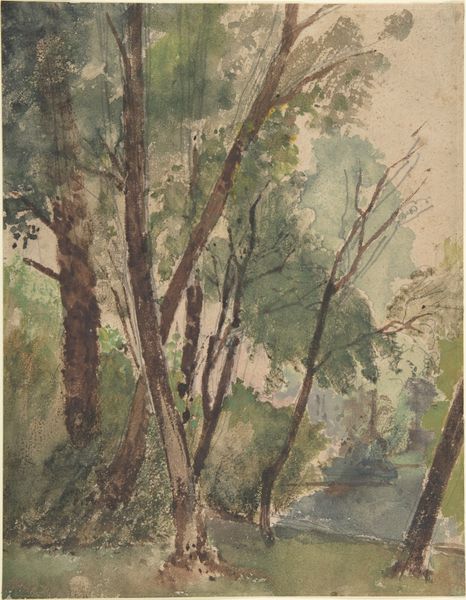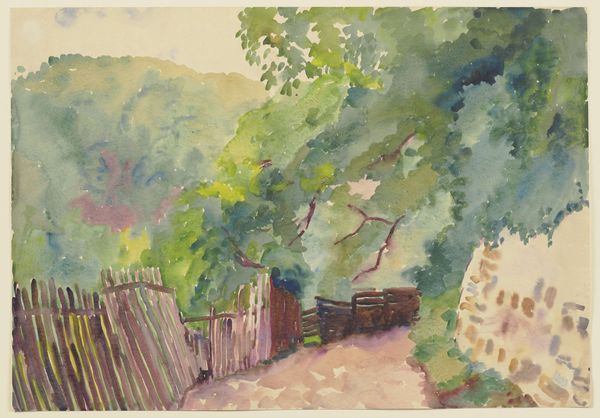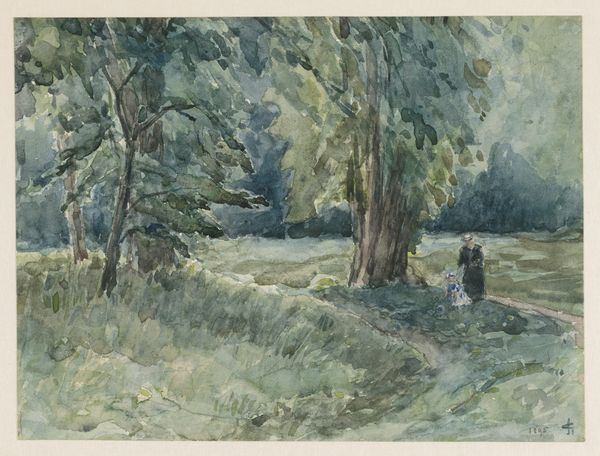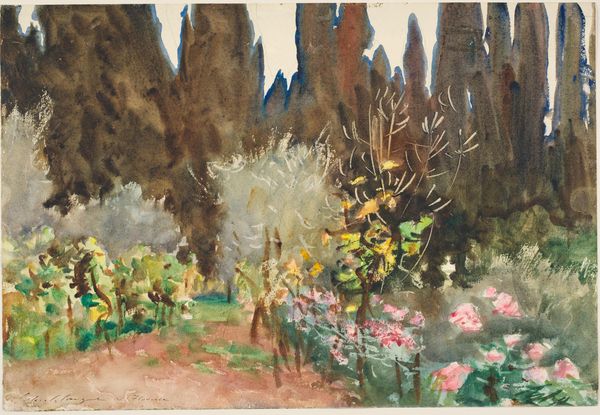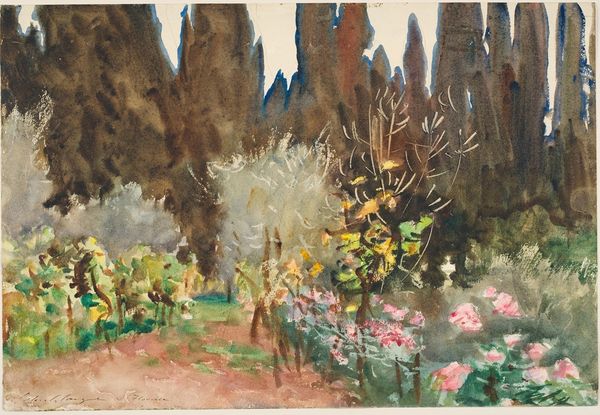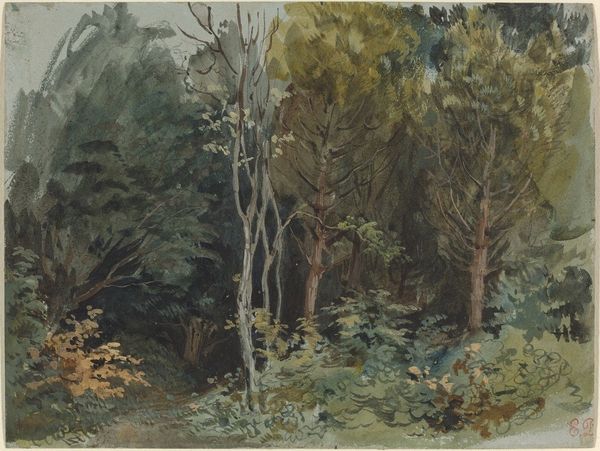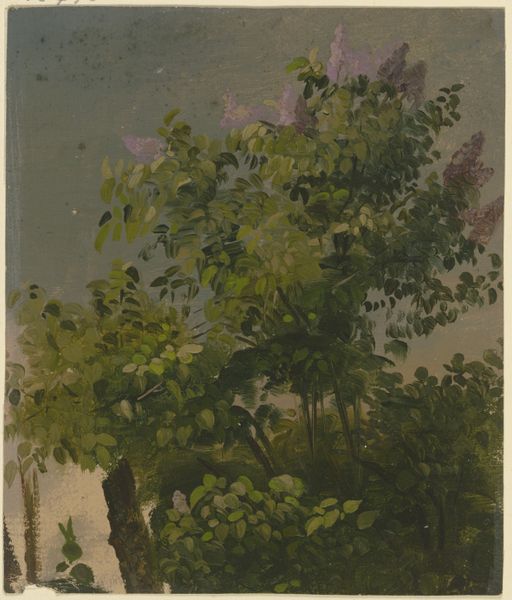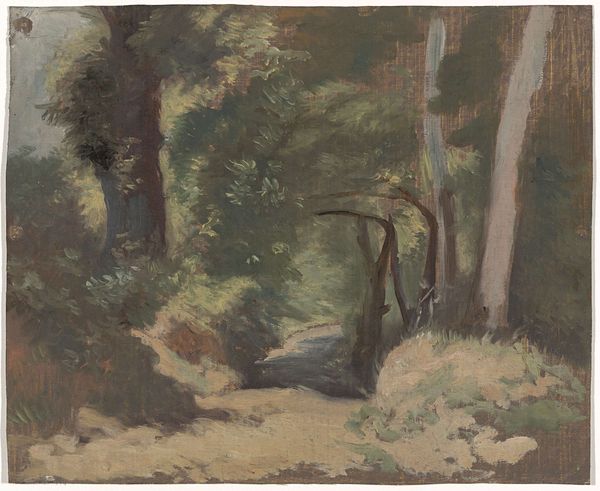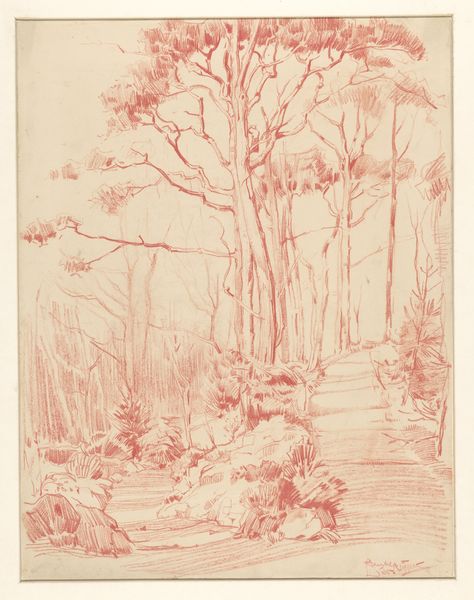
#
landscape
#
nature
#
japonisme
Copyright: Public Domain
Editor: Here we have Fritz Hauck's "Japanese Garden," painted around 1900, rendered with watercolor and drawing. The delicate brushstrokes and muted tones evoke a feeling of tranquility. What strikes me most is the clear influence of Japonisme; what's your take? Curator: Absolutely. This work gives us an entry point to discussing Japonisme and its complex relationship with cultural appropriation and artistic inspiration. How does a German artist like Hauck engage with Japanese aesthetics at the turn of the century? Is it homage, appropriation, or a more nuanced form of cultural exchange? Editor: That's a good point. The presence of figures in traditional Japanese dress certainly highlights that cross-cultural exchange. Curator: Precisely. The figures become central to the narrative. They're not simply placed in the garden; they inhabit it, imbuing the space with a sense of lived experience, though filtered through a Western lens. I’d also say this asks us to reflect on the gaze; who is this garden for, and whose perspective shapes its representation? What power dynamics are at play when Western artists adopt and adapt Eastern motifs? Editor: So it's not just about pretty landscapes, but also a deeper interrogation of cultural exchange and power dynamics? Curator: Exactly. We must critically examine how cultures borrow from one another, especially when colonial power dynamics are at play. Editor: I hadn’t thought of it that way initially, but I understand much better how to consider such issues of cultural borrowing and appropriation now. Curator: Seeing art through different cultural lenses certainly adds depth and complexity, right?
Comments
No comments
Be the first to comment and join the conversation on the ultimate creative platform.
